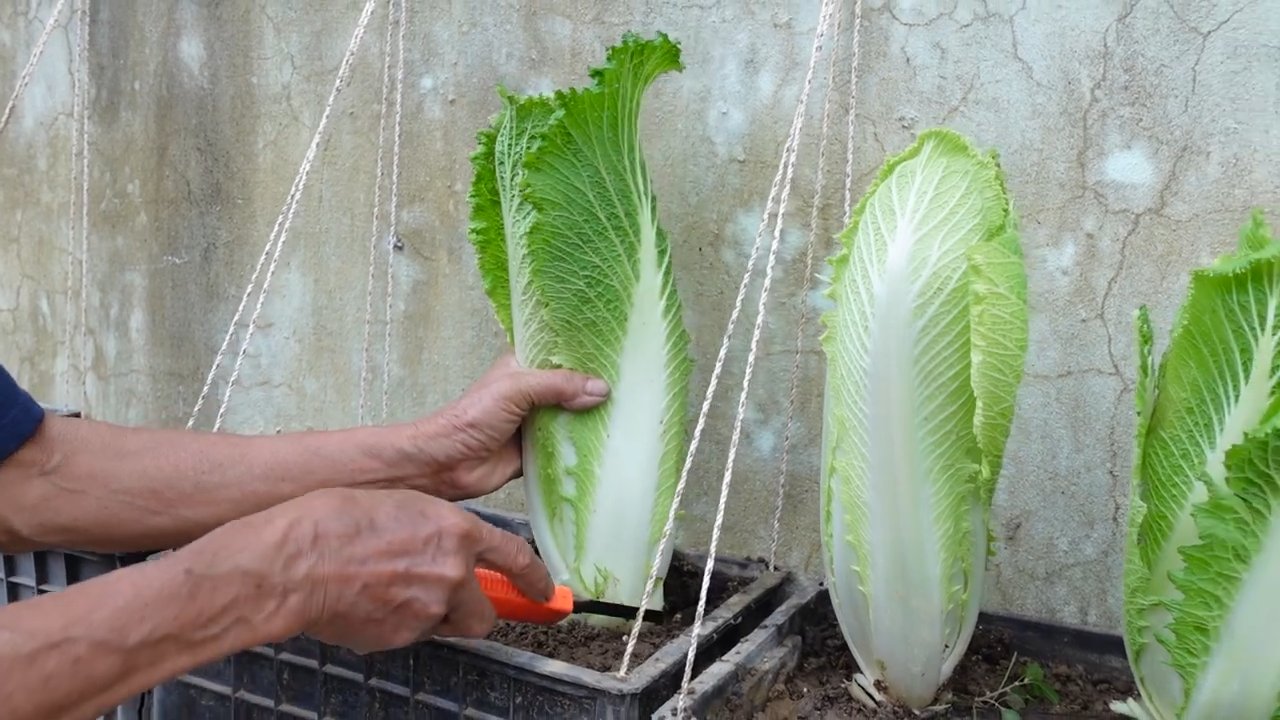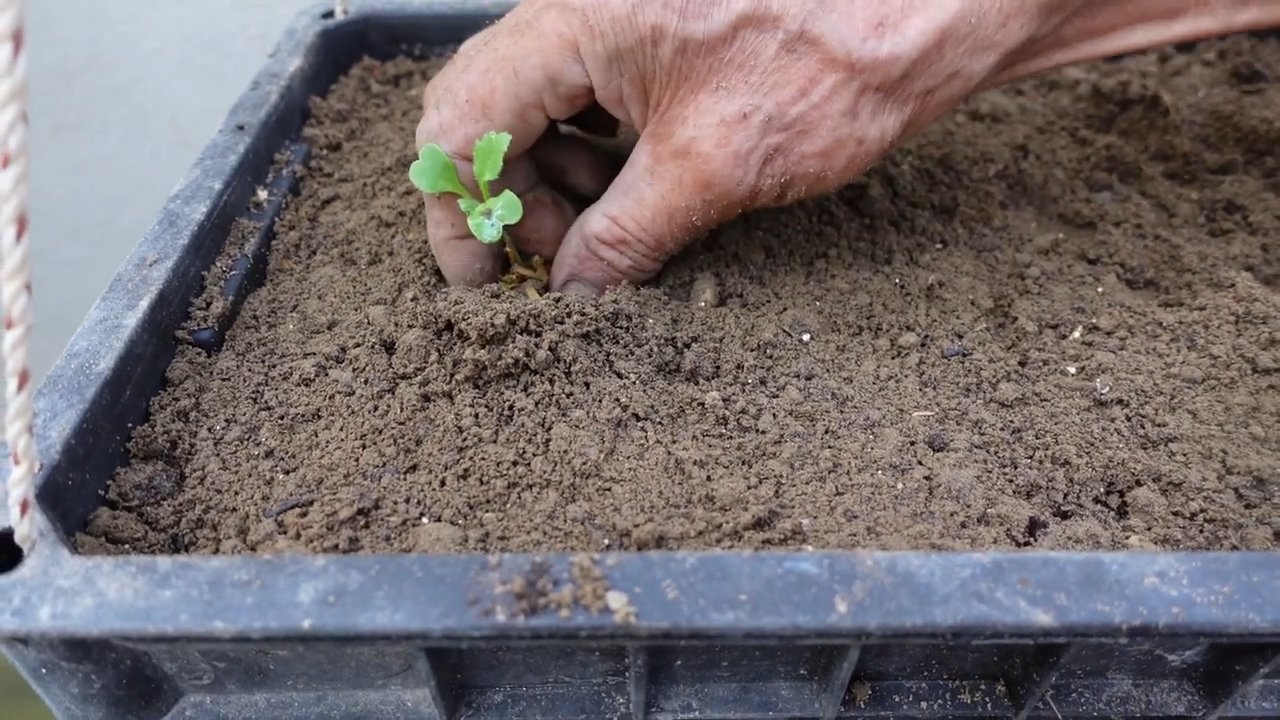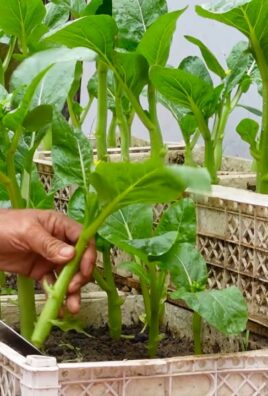Easy to grow vegetables – that’s the dream, isn’t it? Imagine stepping outside your back door and harvesting fresh, flavorful ingredients for tonight’s dinner. No more trips to the grocery store for wilted lettuce or tasteless tomatoes! For centuries, humans have cultivated their own food, from ancient Roman kitchen gardens to the victory gardens of World War II. This connection to the earth is deeply ingrained in us, and the satisfaction of nurturing a plant from seed to table is truly rewarding.
But let’s be honest, the thought of starting a garden can be intimidating. Where do you even begin? What if you don’t have a green thumb? That’s where this DIY guide comes in! I’m here to share some simple, effective tricks and hacks that will make growing your own food not only possible but also enjoyable. We’ll focus on easy to grow vegetables that are perfect for beginners, even if you’ve never planted a seed before.
In today’s world, knowing where your food comes from is more important than ever. By growing your own vegetables, you can control what goes into them – no harmful pesticides or artificial fertilizers. Plus, homegrown produce simply tastes better! So, let’s ditch the overwhelm and dive into the wonderful world of home gardening. Get ready to discover how easy it can be to cultivate your own little slice of edible paradise!

Vegetable Gardening for Beginners: Your Easy Garden Start
Hello garden friends! Have you always wanted to grow your own vegetables but never dared to try? Don’t worry, I’ll show you how easy it can be! We will focus on vegetables that are particularly beginner-friendly and also thrive well in small spaces. Let’s get started!
The Right Preparation is Everything
Before we start planting, we need to clarify a few important things.
- Location: Most vegetables need at least 6 hours of sun per day. Observe your garden or balcony to find the sunniest spot.
- Soil: Vegetables need nutrient-rich, well-draining soil. If you have a garden, you can improve the soil with compost or well-rotted manure. For the balcony, I recommend high-quality potting soil.
- Containers: You can grow vegetables in a garden bed, in raised beds, or in pots and containers. Make sure the containers are large enough and have drainage holes so that water can run off.
- Seeds or seedlings: For beginners, seedlings are often easier because they already have a head start on growth. However, you can also use seeds, which are cheaper and offer you more variety.
Vegetables for Beginners: My Top Recommendations
Here are my personal favorites for vegetables that are easy to grow:
- Lettuce: Lettuce grows quickly and is uncomplicated. There are many different varieties, from loose-leaf to head lettuce.
- Radishes: Radishes are super fast-growing and can be harvested after just a few weeks.
- Zucchini: Zucchini are very productive and relatively easy to care for. Make sure they have enough space.
- Bush beans: Bush beans are robust and provide a rich harvest.
- Swiss chard: Swiss chard is a great leafy green that can be harvested multiple times.
- Herbs: Herbs like basil, parsley, chives, and mint are easy to grow and enhance any dish.
Step-by-Step Guide: Planting Vegetables
Now let’s get down to it! I’ll show you how to successfully plant your vegetables.
1. Preparation of the Soil or Containers
- Garden bed: Loosen the soil with a digging fork and remove weeds. Mix in compost or manure to enrich the soil with nutrients.
- Raised bed: Fill the raised bed with a mixture of coarse material (e.g., branches and twigs), leaves, compost, and potting soil.
- Pots and containers: Fill the containers with high-quality potting soil. Make sure the soil is loose and airy.
2. Sowing or Planting
- Sowing: Read the instructions on the seed packet carefully. Most vegetables are sown in rows or clusters. Pay attention to the correct spacing between the plants. Cover the seeds with soil and water them gently.
- Planting seedlings: Dig a hole that is slightly larger than the root ball of the plant. Place the plant in it and fill the hole with soil. Press the soil down lightly and water the plant well.
3. Caring for the Vegetables
- Watering: Water your vegetables regularly, especially in dry weather. Make sure the soil does not dry out, but avoid waterlogging.
- Fertilizing: Fertilize your vegetables regularly with an organic fertilizer. I like to use compost tea or nettle manure.
- Weeding: Remove weeds regularly so they don’t take nutrients away from your vegetables.
- Pest protection: Observe your plants regularly for pests. If necessary, you can use natural pesticides.
Special Tips for Individual Vegetable Varieties
Here are a few special tips for the individual vegetable varieties:
- Lettuce: Lettuce needs a cool location and regular watering. Pick the leaves as needed.
- Radishes: Radishes grow best in loose soil. Water them regularly so they don’t crack.
- Zucchini: Zucchini need a lot of space and nutrients. Fertilize them regularly and water them generously.
- Bush beans: Bush beans need a sunny location and regular watering. Harvest the beans as soon as they are ripe.
- Swiss chard: Swiss chard is very robust and easy to care for. Harvest the leaves as needed.
- Herbs: Herbs need a sunny location and well-draining soil. Cut them regularly to make them bushier.
Harvest Time: The Reward for Your Effort
The harvest is the best part of vegetable gardening! Harvest your vegetables as soon as they are ripe. Lettuce and radishes can be harvested after just a few weeks, while zucchini and beans take a little longer. Enjoy your homegrown vegetables fresh and crisp!
Avoiding Common Mistakes
Here are a few common mistakes that beginners make when growing vegetables, and how you can avoid them:
- Wrong location: Make sure your vegetables get enough sun.
- Poor soil: Improve the soil with compost or manure.
- Too little water: Water your vegetables regularly, especially in dry weather.
- Too much fertilizer: Over-fertilizing can be harmful. Use organic fertilizer and follow the dosage instructions.
- Neglect: Observe your plants regularly and take care of them.
Additional Tips and Tricks
- Crop rotation: Pay attention to crop rotation to avoid depleting the soil on one side.
- Companion planting: Plant different vegetables next to each other to repel pests and improve the soil.
- Mulching: Mulch the soil with straw or grass clippings to retain moisture and suppress weeds.
- Composting: Compost your garden waste to get valuable fertilizer for your vegetables.
Where You Can Buy Seeds and Plants
You can buy seeds and seedlings at garden centers, hardware stores, or online. Pay attention to quality and choose varieties that are suitable for your region. I like to buy from local nurseries, as they often have a larger selection of regional varieties.
Your First Own Vegetable Garden: It’s Easier Than You Think!
I hope this guide has encouraged you to start your own vegetable garden. It’s really easier than you think, and the reward is priceless. Happy gardening! And remember: even if something doesn’t work out, don’t be discouraged. Every gardener is always learning!

Conclusion
So, there you have it! Mastering the art of growing your own vegetables doesn’t have to be an intimidating endeavor. By embracing these simple yet effective DIY tricks, you can transform your backyard, balcony, or even a sunny windowsill into a thriving edible garden. We’ve shown you how to make the most of limited space, nurture your soil naturally, and protect your precious plants from common pests, all while saving money and enjoying the unparalleled satisfaction of harvesting your own fresh produce.
Why is this a must-try? Because it’s empowering! Imagine the joy of serving a salad made entirely from ingredients you nurtured from seed to table. Think of the health benefits of consuming pesticide-free, nutrient-rich vegetables. Consider the environmental impact of reducing your reliance on commercially grown produce. And, of course, there’s the sheer fun of getting your hands dirty and connecting with nature.
But the beauty of DIY lies in its adaptability. Feel free to experiment with different varieties of vegetables that suit your taste and climate. Try companion planting to maximize space and deter pests. Explore different container gardening techniques to find what works best for your available space. Perhaps you want to try vertical gardening with climbing beans or tomatoes, or maybe you’d like to create a raised bed for easier access and improved drainage. The possibilities are endless!
For example, if you live in a particularly hot climate, consider using shade cloth to protect your leafy greens from scorching. If you struggle with slugs and snails, try creating a beer trap or sprinkling diatomaceous earth around your plants. If you’re short on space, focus on growing compact varieties of vegetables like bush beans, dwarf tomatoes, or leafy greens that can be harvested continuously.
Don’t be afraid to make mistakes – gardening is a learning process. Every failure is an opportunity to learn and improve. The most important thing is to get started and enjoy the journey.
We are confident that these tips will empower you to successfully grow your own vegetables, regardless of your experience level. So, grab your gardening gloves, gather your seeds, and get ready to experience the magic of homegrown goodness.
We’re eager to hear about your experiences! Share your successes, challenges, and favorite tips in the comments below. Let’s create a community of passionate gardeners who are dedicated to growing their own food and living a healthier, more sustainable lifestyle. Show us your pictures, tell us your stories, and let’s inspire each other to cultivate a greener, more delicious world, one vegetable at a time. Remember, growing your own vegetables is not just a hobby; it’s an investment in your health, your well-being, and the future of our planet. So, what are you waiting for? Get growing!
Frequently Asked Questions (FAQ)
What are the easiest vegetables to grow for beginners?
That’s a great question! For beginners, we highly recommend starting with vegetables that are relatively low-maintenance and forgiving. Some excellent choices include:
* **Lettuce:** Lettuce is quick to grow and can be harvested continuously. Loose-leaf varieties are particularly easy to manage.
* **Radishes:** Radishes are incredibly fast-growing, often ready to harvest in just a few weeks.
* **Spinach:** Similar to lettuce, spinach is easy to grow and can be harvested multiple times.
* **Green Beans:** Bush beans are a great option for beginners as they don’t require staking and produce a bountiful harvest.
* **Zucchini:** Zucchini is known for its prolific growth, so be prepared for a lot of it!
* **Cherry Tomatoes:** Cherry tomatoes are generally easier to grow than larger tomato varieties and are perfect for snacking.
* **Peppers:** Bell peppers and other sweet peppers are relatively easy to grow in warm climates.
These vegetables are generally resistant to pests and diseases and don’t require a lot of specialized care. They’re a great way to build confidence and experience as a beginner gardener.
How much sunlight do vegetables need?
Most vegetables need at least 6-8 hours of direct sunlight per day to thrive. However, some leafy greens like lettuce and spinach can tolerate partial shade, especially in hot climates. When choosing a location for your vegetable garden, make sure it receives ample sunlight throughout the day. If you’re growing vegetables indoors, you may need to supplement with grow lights.
What kind of soil is best for growing vegetables?
Vegetables prefer well-draining soil that is rich in organic matter. A good soil mix should be loose and crumbly, allowing for good root growth and aeration. You can improve your soil by adding compost, aged manure, or other organic amendments. Avoid heavy clay soils, which can become waterlogged and inhibit root growth. A soil test can help you determine the pH level and nutrient content of your soil and identify any deficiencies that need to be addressed.
How often should I water my vegetables?
The frequency of watering depends on several factors, including the type of vegetable, the weather, and the soil type. In general, vegetables need about 1 inch of water per week. Water deeply and less frequently, rather than shallowly and often. This encourages deep root growth, which makes plants more drought-tolerant. Check the soil moisture regularly by sticking your finger into the soil. If the top inch of soil feels dry, it’s time to water. Avoid overwatering, which can lead to root rot.
How can I protect my vegetables from pests and diseases?
There are several things you can do to protect your vegetables from pests and diseases:
* **Choose disease-resistant varieties:** When selecting seeds or seedlings, look for varieties that are known to be resistant to common diseases in your area.
* **Practice crop rotation:** Avoid planting the same vegetables in the same location year after year, as this can build up pests and diseases in the soil.
* **Maintain good sanitation:** Remove any dead or diseased plant material from your garden to prevent the spread of disease.
* **Use organic pest control methods:** Consider using natural pest control methods like insecticidal soap, neem oil, or diatomaceous earth to control pests.
* **Encourage beneficial insects:** Attract beneficial insects like ladybugs and lacewings to your garden by planting flowers that provide them with food and shelter.
* **Water properly:** Avoid overhead watering, which can create a humid environment that promotes fungal diseases.
Can I grow vegetables in containers?
Absolutely! Container gardening is a great option for people with limited space or poor soil. When growing vegetables in containers, choose containers that are large enough to accommodate the mature size of the plant. Use a high-quality potting mix and make sure the containers have drainage holes. Water regularly and fertilize as needed. Some vegetables that do well in containers include tomatoes, peppers, herbs, lettuce, and strawberries.
What are some common mistakes to avoid when growing vegetables?
Here are some common mistakes to avoid:
* **Planting too early:** Wait until the danger of frost has passed before planting warm-season vegetables like tomatoes and peppers.
* **Overcrowding plants:** Give your vegetables enough space to grow and thrive. Overcrowding can lead to poor air circulation and increased susceptibility to pests and diseases.
* **Not providing enough sunlight:** Make sure your vegetables receive at least 6-8 hours of direct sunlight per day.
* **Overwatering or underwatering:** Water deeply and less frequently, and check the soil moisture regularly.
* **Not fertilizing:** Vegetables need nutrients to grow and produce a bountiful harvest. Fertilize regularly with a balanced fertilizer.
* **Ignoring pests and diseases:** Monitor your plants regularly for signs of pests and diseases and take action promptly.
By avoiding these common mistakes, you can increase your chances of success and enjoy a bountiful harvest of homegrown vegetables.





Leave a Comment